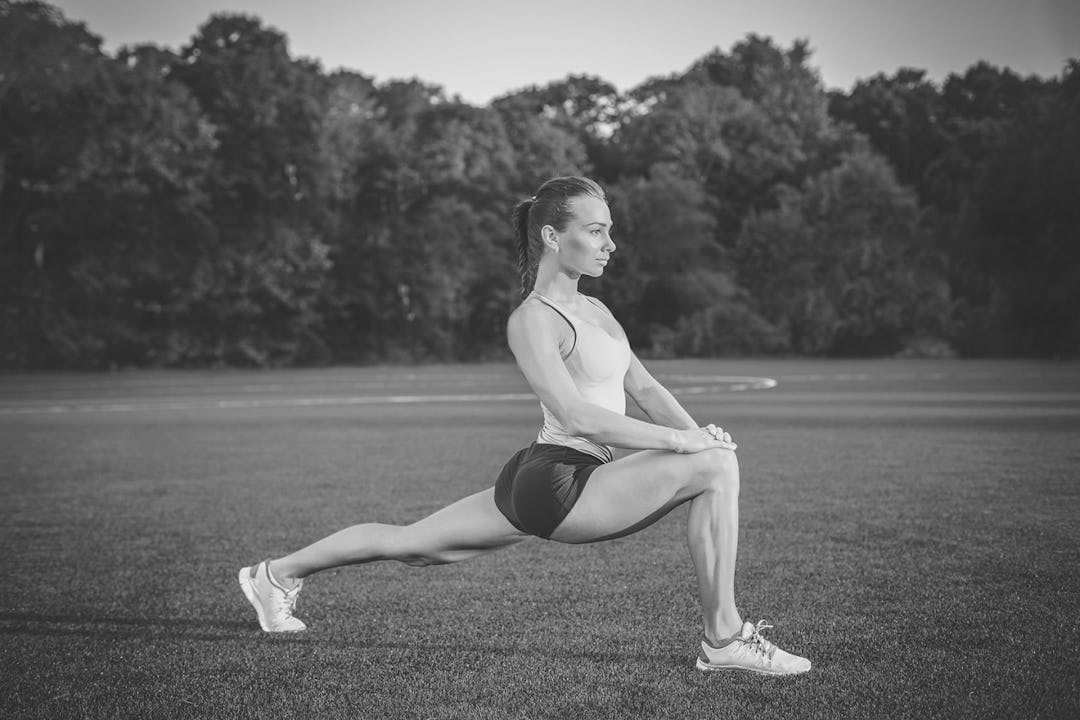When I look at the current state of the fitness industry I am saddened and excited all at once.
Saddened because so much of what is proliferated in our industry is still reliant on fad gadgets and miracle potions…consumers are still looking for the quick fix that will instantly cure all their fitness woes.
Excited because there are companies that are gaining popularity and educating those that are willing to listen to what really works…both old and new approaches to gain strength that require effort and dedication.
Though each of us has developed our own preferred tools and have become proficient in their use, I always reflect on the old saying: “if all you have is a hammer, then everything looks like a nail.”
I know that depending on what timeframe I refer to in my past, I have used primarily barbells, kettlebells, steel clubs, or bodyweight workouts as my go-to tools.
These days, instead of referring to individual implements, I think of different movement patterns as my tools. With this being the case, my tool kit has shrunk and expanded at the same time.
I can effectively use any piece of equipment with a movement pattern and get similar, but different, results.
By changing my perspective, I effectively transformed my hammer into a multi-tool that can easily fill the needs of my own training while enhancing the training I offer to my wide range of clients at the same time.
Avoid Back & Knee Injuries with the Shinbox Exercise
In this article, I will be sharing one of my favorite movement patterns; it is based on an position called the Shinbox, a primary component of the work in my Evolution Kettlebell Groundwork program.
The great thing about the Shinbox is that it simultaneously requires internal rotation on one hip while the opposite hip is externally rotated.
Simply getting into this position will usually provide some interesting feedback regarding the balance of your hips in rotation. One side will invariably be tighter and higher than the other, an interesting phenomenon that can easily be attributed to side dominance, performance in unilateral sports, or lack of rotational hip movements in any way.
Now that we have an easy way to assess rotation at the hips with the Shinbox, it is important to realize what value healthy hip rotation provides. Did you know that a lack of hip rotation is a huge contributing factor for lower back injury?
Having shortened or weak hip rotators contributes to abnormal lumbopelvic posture which translates into potentially destructive excess motion in the lumbar spine. Do you or any of your clients experience knee pain?
Very often, knee pain, and knee tracking issues are the result of a lack of hip rotational mobility and strength.
By addressing hip function, particularly hip rotation, we contribute to healthier lower backs and knees. Sounds good to me! Let’s get into the drills!
Open Chain Mobility Drill | Hacky Sack
This drill is a great starting place for anyone looking to increase their rotational hip mobility. You start by standing on one foot with the opposite leg fully extended and foot hovering just off of the ground.
Initiate the movement by bringing the inside of the ankle up towards your midline. Extend the leg fully and then mirror that movement to the outside.
Use an assist if single leg balance is an issue and gradually reduce assistance until you can perform the drill with confidence while minimizing any superfluous movement.
Closed Chain Mobility Drill | Windshield Wiper
The Windshield Wiper is a great way to see how honest you were in performing your Hacky Sack drill. If you were using momentum to get a little more rotation or were haphazardly swinging your leg around, the Windshield Wiper will let you know. Sit down with your knees to your chest and feet shoulder width apart.
Place your hands behind you for support and keep your feet firmly planted on the floor as you allow both knees to drift off to the left. Only go as far as you can keep your hips down and feet in contact with the floor. Return to the starting position and repeat to the opposite side.
Strength Drills | Shinbox Switch to Hip Extension
Bodyweight Shinbox Switch to Hip Extension – The Shinbox position is found by allowing both knees to drift all the way to one side while sitting up tall. Ideally, both hips will be in contact with the ground and you will maintain a vertical spine avoiding arching to any side.
From this position, you will extend your hips by tucking them under and driving them forward while keeping your shoulders over your hips and avoid arching. Sit back into the Shinbox and do a Windshield Wiper to switch sides.
Racked Shinbox Switch to Hip Extension
This drill is identical to the bodyweight version, but includes holding two relatively light kettlebells in the rack position.
Ideally, you will keep the elbows married to the ribs throughout the drill. At hip extension, it is extremely important to avoid any arching of the lower back.
Flexibility Drill (External Rotation) | Sleeping Pigeon
From the Shinbox position, extend the rear leg while maintaining contact with the floor on the inside of the knee and instep of the foot. Place your hands on the floor for support as you point your toes on the extended leg and turn that hip over.
At this point, you should find that you are ìon your lacesî which means that the top of your foot should be laying flat on the ground. Reach forward with both hands and take your forehead towards the ground tucking chin to chest.
Flexibility Drill (Internal Rotation) | Cossack Squat
The beginning position for this drill is a deep flat foot squat; the lower the better, as long as it does not prove injurious to your knees. While in the deep squat, shift as much weight as possible to your left foot.
Now that your right foot is not load bearing, the next step is to allow your right knee to drift inward and down towards the floor. Be careful not to force your knee further than you can control.
If you can get the knee to rest on the ground, your next goal will be to attempt to sit tall and gradually introduce more weight into the rotated hip.
Because these drills are so far outside the realm of what most strength training explores, start slow and be consistent in your training. Your hip range of motion, strength, and flexibility will increase by leaps and bounds!








)





